Cost of Website Defacement: Key Factors and Financial Impact
By Eric Do Couto
Updated April 21, 2025
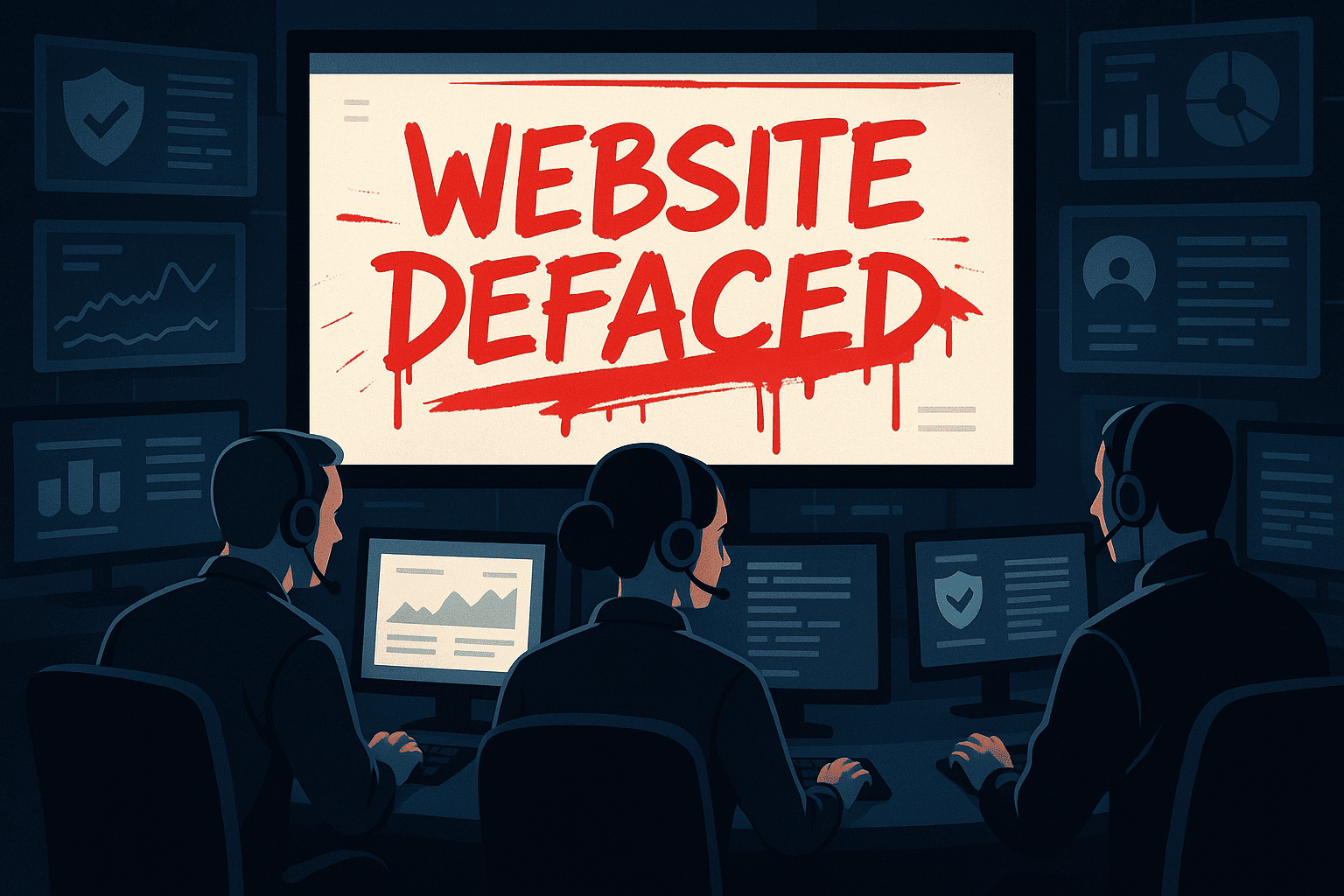
Cost of Website Defacement: Key Factors and Financial Impact

Website defacement can cost businesses thousands of dollars in direct financial losses, as well as lasting damage to their reputation and customer trust. When a website is compromised and its content altered by unauthorized parties, affected organizations often face not only repair and recovery expenses but also disruptions to daily operations. The impact can be immediate, with lost sales and decreased productivity, as well as long-term, with lingering doubts from customers and partners.
Beyond financial penalties, defacement incidents frequently lead to a reduction in search engine rankings and visibility, further impacting a company's market presence. Expenses related to the investigation, legal liabilities, and implementing stronger security measures can also add up quickly. Recent reports show that issues like these make the actual cost of website defacement much greater than most anticipate.
Understanding the range of potential costs and consequences helps organizations recognize why investing in cybersecurity and ongoing website monitoring is essential. By being proactive, companies can avoid the setbacks and cumulative losses associated with these attacks.
Understanding Website Defacement
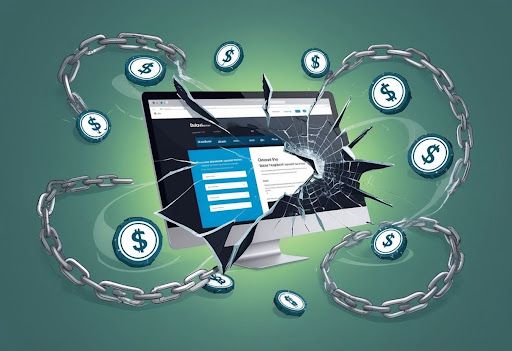
Website defacement is a form of cyberattack that threatens website integrity by allowing attackers to make unauthorized changes to site content. Hackers often exploit specific vulnerabilities to target websites, altering their appearance or delivering malicious messages.
What Is Website Defacement
Web defacement occurs when an attacker gains unauthorized access to a website and modifies its content without permission. The altered content may include messages, images, banners, or sometimes offensive or political statements. These attacks typically aim to embarrass or discredit the website owner.
Unlike other forms of cyberattacks that steal data, defacement attacks focus on changing visual elements or information presented to site visitors. Hacked websites can suffer immediate reputational damage, loss of trust, and possible regulatory scrutiny. Web defacement is particularly disruptive for organizations with a strong online presence, such as businesses, governments, and educational institutions.
Defacements range in sophistication, but the defining feature is always unauthorized changes to a site’s visible or functional elements. They are visible to anyone visiting the affected web page.
Types of Defacement Attacks
There are several categories of defacement attacks, each with its characteristics. The most common type is the simple replacement of website content with messages generated by the attacker. These messages can contain propaganda, threats, or even claims of responsibility for the breach.
Some attackers conduct "mass defacement," targeting multiple websites at once with similar content. Others may inject malicious scripts or redirect users to harmful websites. In a few cases, defacement is used as a cover for more serious intrusions, such as data theft or the deployment of malware.
Hacktivist groups often use web defacement as a method to make a public statement or protest. Other attackers may deface sites to showcase their hacking skills or to exploit vulnerabilities for financial gain. The intent and scale of these defacement attacks may vary widely.
Common Vulnerabilities Leading to Defacement
Defacement attacks exploit known weaknesses in website infrastructure and code. Common vulnerabilities include outdated content management systems (CMS), weak administrator passwords, and unpatched software components. Attackers often leverage SQL injection or cross-site scripting (XSS) to gain the necessary access.
A lack of proper user authentication and poor permission controls can make it easier for unauthorized users to upload or edit web content. Websites that do not follow security best practices, such as regularly updating and backing up, are especially at risk.
Third-party plugins and extensions are another frequent entry point for attackers. By maintaining up-to-date software and restricting access privileges, organizations can reduce the risk of web defacement. More information about causes and prevention is available through guides on website defacement attack prevention.
Financial Impact of Website Defacement
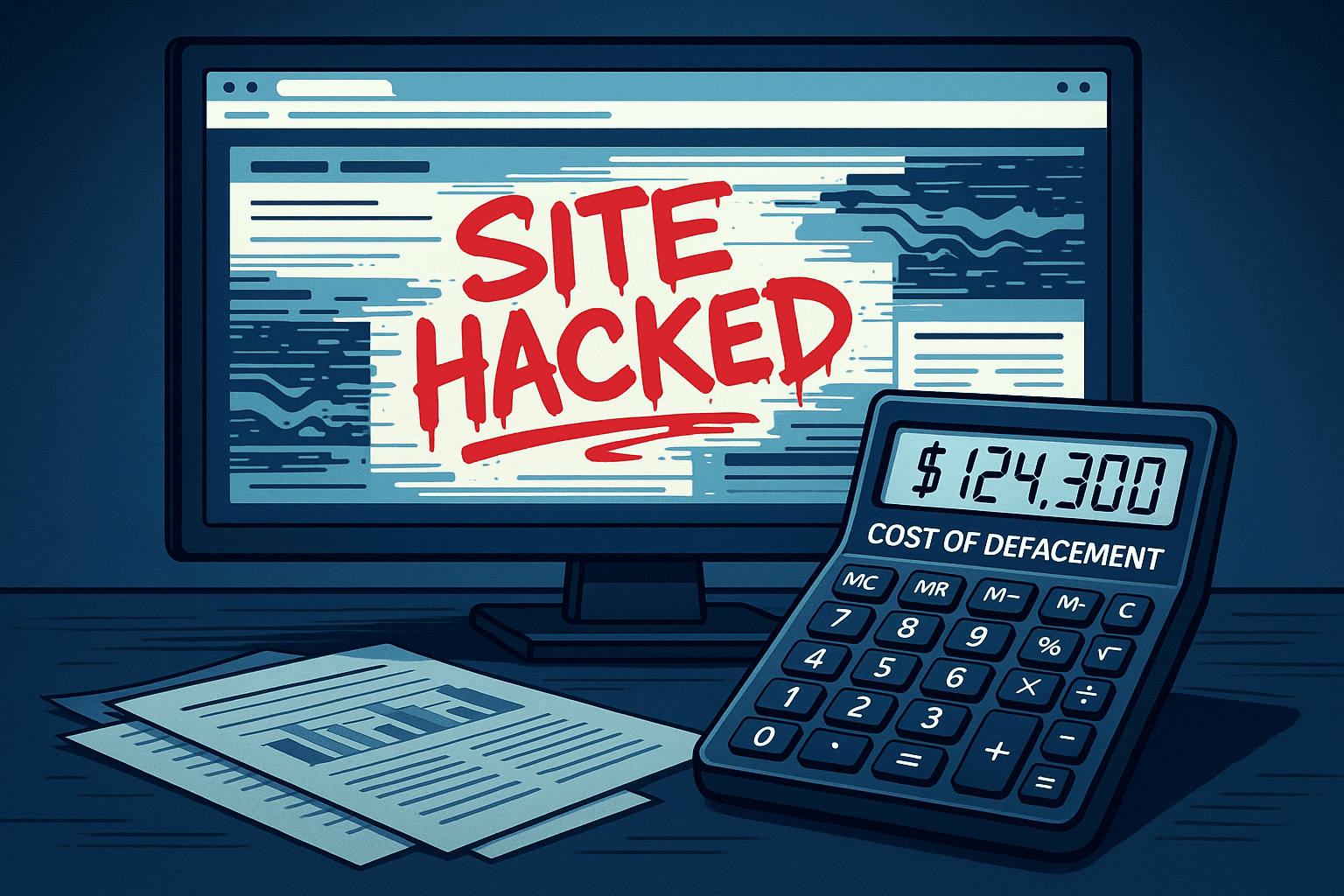
Website defacement leads to immediate financial losses and can trigger a cascade of hidden expenses that affect long-term business health. In addition to recovery costs, organizations face risks to business reputation and customer trust.
Direct Costs of Defacement
A website breach demands immediate spending on incident response, such as engaging cybersecurity experts, patching vulnerabilities, and restoring backups. Professional fees and technology costs can quickly accumulate, especially for complex attacks.
Downtime caused by defacement can halt transactions, leading to a direct loss of revenue for e-commerce and service sites. Even a short disruption can result in thousands of dollars of missed sales.
For high-traffic or prominent businesses, remaining offline or displaying altered content damages the brand’s image. This triggers expenses in marketing campaigns aimed at damage control. Legal actions, such as data breach notifications or compliance penalties, may further increase out-of-pocket costs after a defacement, as detailed by industry reports on the financial losses caused by breaches.
Hidden and Long-Term Expenses
The damage from website defacement often extends beyond the initial incident, affecting a company’s growth and market position. Long-term impacts include a reduction in customer trust, as users become hesitant to revisit or transact after a security breach.
Performance monitoring and enhanced security systems must be implemented to prevent future attacks, requiring ongoing operational investment. Companies may also see lower search engine rankings if their website remains compromised, which can directly impact visitor numbers, as described in resources on reducing search engine visibility.
A diminished business reputation can drive customers to competitors, resulting in a shrinking market share over time. Costs linked to public relations efforts, regulatory scrutiny, and increased insurance premiums can continue for months or even years. Organizations must factor in both tangible and intangible costs when assessing the real price of defacement.
Security Breaches and Attack Methods

Website defacement exposes sensitive data and damages trust. Attackers use a range of advanced tactics to breach sites and disrupt digital operations.
Security Infringements
A security breach occurs when unauthorized individuals gain access to a website, system, or data. Attackers often exploit vulnerabilities like weak passwords, outdated software, or unpatched plugins. Common methods include SQL injection and cross-site scripting (XSS).
SQL injection allows hackers to manipulate website databases, which can sometimes result in defaced pages or stolen data. Cross-site scripting injects malicious scripts into web pages, compromising user sessions and spreading unauthorized content. Both tactics undermine the website's integrity and can lead to significant financial and reputational losses.
Hackers also look for misconfigured servers, lack of HTTPS, and exposed admin interfaces. These weaknesses make it easier for them to alter site content or plant malware. Quick detection and regular security reviews are essential to reduce the risk of breaches.
Phishing and Ransomware
Phishing attacks target employees or stakeholders through deceptive emails or fake login pages. The goal is to trick users into sharing credentials or installing malicious software. Once access is gained, attackers may alter website content or lock administrators out.
Ransomware is a type of malicious software that encrypts data or takes control of a site until a ransom is paid. In the context of website defacement, ransomware can replace or hide content, leaving a payment demand visible to visitors.
These attack methods are effective because they rely on human error and often bypass technical defenses. Regular staff training and multi-factor authentication help mitigate the risks posed by phishing and ransomware campaigns.
Detection and Monitoring of Defacement
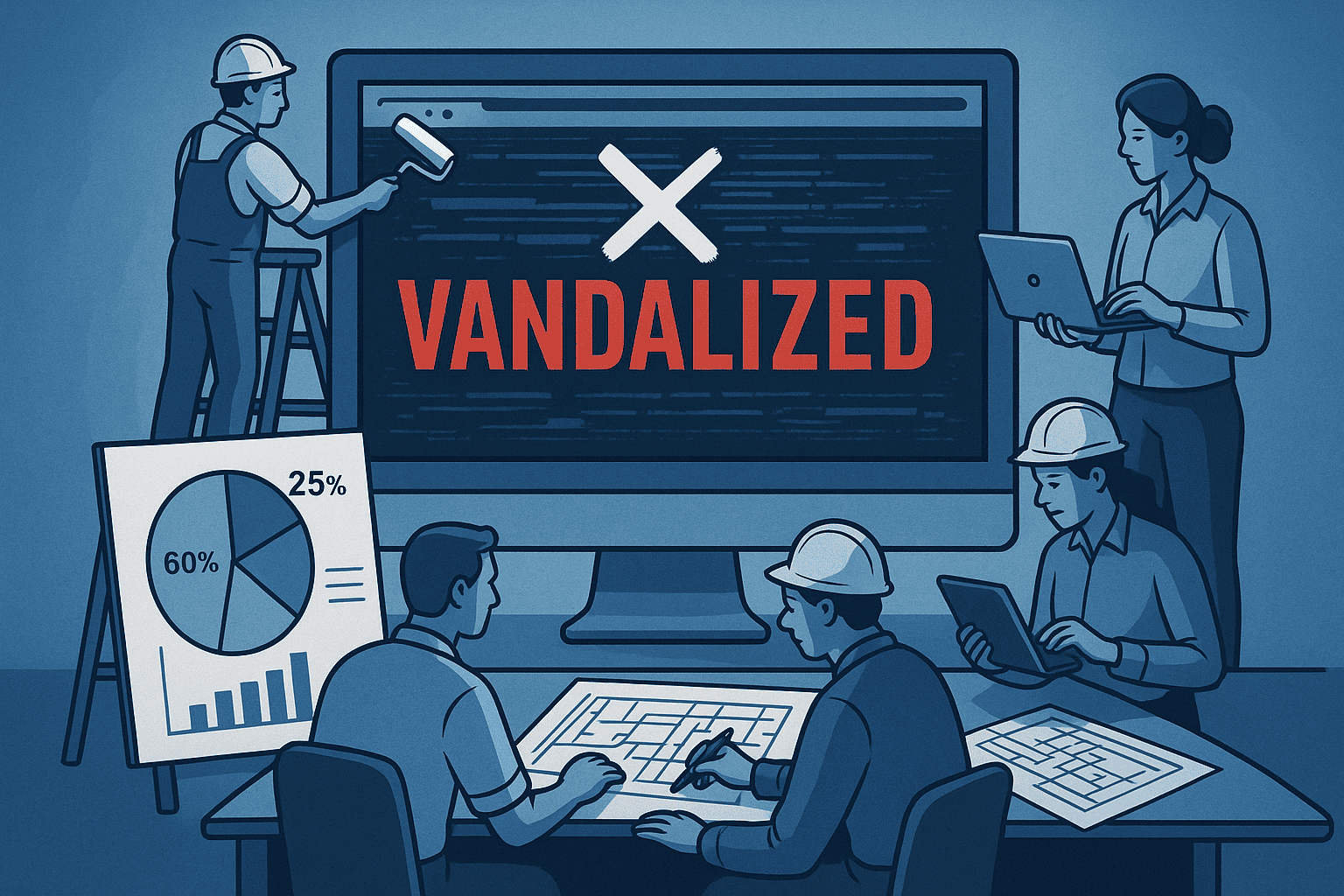
Effective detection of website defacement relies on robust monitoring, rapid alerts, and high-quality tools specifically designed to identify unauthorized changes. Choosing the right monitoring methods helps businesses minimize the risk of prolonged or unnoticed defacement, reducing damage and downtime.
Utilizing Defacement Monitoring Tools
Specialized defacement monitoring tools automatically scan websites for unauthorized modifications, helping organizations identify threats quickly. These tools usually track changes in HTML, images, scripts, and file integrity. Regular scans ensure even small, subtle defacements are detected.
Advanced solutions offer high sensitivity and use intelligent detection algorithms. Tools like Sentrypage provide heightened accuracy and can spot minute defacements using comprehensive scanning features. Many providers allow a 30-day free trial, giving businesses time to evaluate the product’s effectiveness before committing.
For maximum value, users should compare features such as scan frequency, detection accuracy, and integration with existing security systems. Easy configuration and scheduled automation are also important factors.
Real-Time Alerts and Notifications
Immediate notifications are crucial in the context of website defacement. When a monitoring tool detects unusual changes, it triggers real-time alerts through multiple communication channels, including email, SMS, or in-app notifications. Fast responses to these alerts can drastically limit damage.
Site administrators should adjust alert thresholds to strike a balance between sensitivity and avoiding false positives. Effective alert notifications must clearly indicate the nature of the detected breach, include details of the affected webpage, and provide suggested actions for remediation.
Advanced monitoring platforms offer customization, enabling IT teams to receive alerts on preferred channels and escalate critical threats. Clear, actionable alerts enable faster decisions and interventions, helping restore the site promptly.
Website Monitor Solutions
Website monitor solutions provide comprehensive protection against defacement by offering layered monitoring and incident management. Services such as Visualping offer automated surveillance and near real-time alerts.
Some monitoring packages cover unlimited domains and scans, while others charge per monitored website. They commonly provide dashboards summarizing both active threats and the overall status of each site. Many also feature historical reporting, so trends and recurring incidents can be analyzed.
For those seeking a trial before purchasing, many solutions offer a free trial period (commonly 30-days), helping businesses determine whether the tool meets their operational needs and integrates with existing workflows.
How can I get started with Website Defacement monitoring?
Step 1: Sign Up for Visualping Today
Register for a free Visualping account by visiting visualping.io](visualping.io), click on 'Get Started' in the top right corner, and complete the sign up process.
Step 2: Create a list of URLs to monitor
Create a list of URLs to monitor for defacement or unexpected changes in a spreadsheet. Create a column for 'description' that describes each individual webpage for easy identification.
Step 3: Bulk Import into Visualping (For Visualping Business Users)
Select the Bulk Import icon in your dashboard, and copy/paste your URLs into the Import tool.
Tips and Tricks:
For defacement monitoring, consider setting your monitoring jobs to the 'Visual' mode and set the sensitivity for alerts at 10% or higher to ignore any smaller changes to these webpages.
Troubleshooting and Remediation

Quick detection and a methodical response are critical for successful website defacement recovery. Addressing file integrity, restoring content, and securing code can minimize further risks and reduce downtime.
Steps to Restore a Defaced Website
Initial troubleshooting starts with isolating the affected systems to prevent further compromise. It is essential to take the website offline or set it to maintenance mode to stop the spread of malicious changes.
Next, the team should examine file modification dates and audit logs to pinpoint when the defacement happened. Use clean, recent backups to restore the original content. If backups are unavailable or compromised, manual repair may be required.
Update passwords, patch vulnerable plugins, and remove unauthorized users. Scan for backdoors using security tools to ensure no persistent threats remain. Ensure all software and CMS components are fully patched to avoid recurring incidents, as highlighted in guides on recovering from defacement attacks.
Content Modification and Text Defacement
Defacements often involve unauthorized edits to web page text, pop-ups, or images. Rapid identification is crucial to prevent reputational damage and the spread of misinformation.
Affected files must be reviewed carefully, with a focus on homepage edits and high-traffic landing pages. Compare current files with previous versions to spot inserts or changes. Automated scripts can help highlight modified sections, making it easier to track.
Restoration should correct tampered text, restore deleted content, and remove injected scripts. Maintain a log of changes for reference and compliance. Establish stricter editing permissions and monitor for future unauthorized content changes to reduce risks, as discussed in potential costs of website defacement.
Securing HTML Elements
Attackers often manipulate HTML elements, injecting malicious code or altering links and forms. Inspect the HTML source code for unauthorized
<script><iframe>Validate the website against a known-good template or version. Remove or fix tampered tags and ensure that security headers, such as Content Security Policy (CSP), are enforced. Regularly update frameworks and libraries to protect against common vulnerabilities.
Implement code review practices and automate integrity checks using version control. Tools that monitor HTML for unexpected changes can provide early alerts and speed up the detection of future defacements, improving overall resilience.
Preventative Measures and Security Best Practices
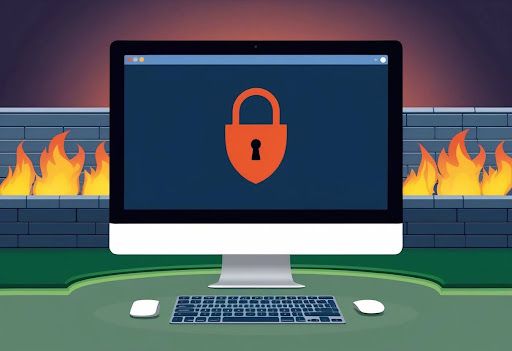
Organizations face both financial and reputational risks if their website is defaced. Reducing these risks depends on proactive security, timely monitoring, and clear protocols to detect unauthorized changes and vulnerabilities early.
Strengthening Website Security
Securing a website begins with minimizing entry points for attackers. This means using strong, unique passwords for each administrative account, enabling two-factor authentication, and routinely updating content management systems, plugins, and themes. Regular software updates help close known vulnerabilities that hackers exploit.
Restricting administrative privileges further limits potential damage from compromised logins. User roles should be assigned based on necessity, and unused accounts must be removed. Installing a web application firewall adds another layer of protection, filtering out suspicious requests before they can cause harm.
Backing up website data regularly is another critical measure. Automated backups ensure that content can be restored quickly in the event of an incident, reducing recovery costs. For more specific strategies, see these detailed website defacement prevention tips. [INSERT LINK]
Ongoing Performance and Security Monitoring
Continuous monitoring is essential to spot issues before they escalate. Automated tools can detect unauthorized content changes, alerting administrators to possible defacement in real-time. Integrating performance monitoring helps to quickly spot any abnormal activity or slowdowns, which can signal an ongoing attack or system issue.
Consider using security plugins that provide malware scanning, file integrity checks, and real-time alerts. These tools help identify problems, such as suspicious modifications or vulnerable components. Comprehensive monitoring, including log reviews and uptime tracking, creates a layered defense and enables rapid response.
For additional guidance, review comprehensive steps for performance and security monitoring designed to safeguard your site from persistent threats.
Impact on Business and Reputation
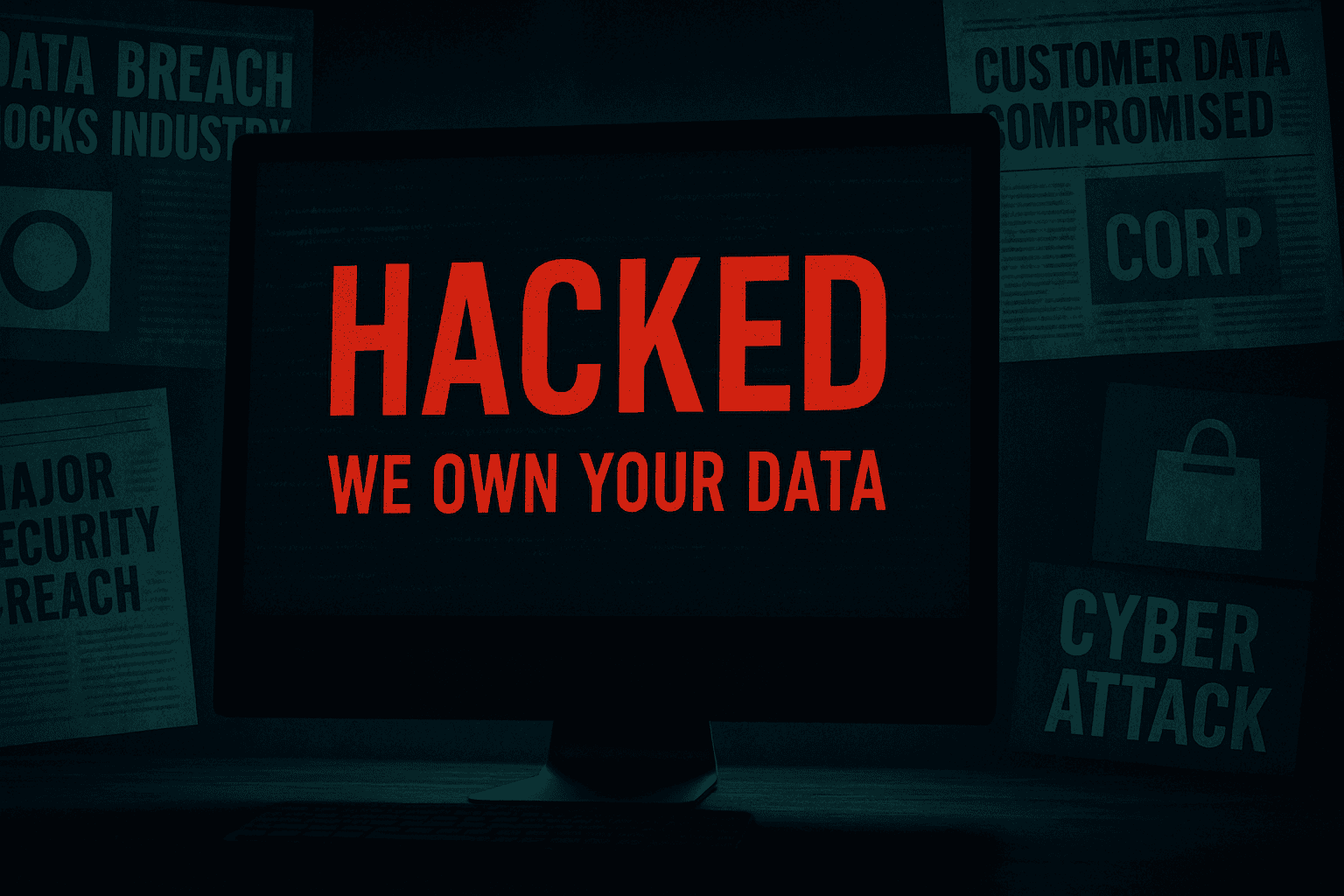
Website defacement causes visible damage to a business's image and can immediately create doubt in the minds of customers and stakeholders. The effects go beyond simple embarrassment and can lead to measurable setbacks in the company’s credibility and performance.
Customer Trust After a Defacement Incident
Customer trust is often fragile after a website defacement. When visitors see altered content or offensive messages, it raises concerns about how well a business protects both its site and its users. This can quickly result in lost visitors, fewer sales, and a decline in user engagement.
A company may be forced to address public fears and repair damage to its brand. A noticeable drop in revenue and increased spending on remediation are common outcomes, as highlighted in discussions on business reputation and financial losses after defacement.
Businesses sometimes need to issue public statements, update security controls, and invest in additional protections. Restoring trust can take much longer than repairing a website. In some cases, customers choose not to return, particularly if they suspect their data might have been at risk.
Protect Your Website From Costly Defacement Attacks
Start monitoring your website for unauthorized changes with Visualping's free account. Get immediate alerts when suspicious activity occurs and prevent reputation damage before it costs you thousands in recovery and lost business.
Eric Do Couto
Eric is the Senior Partnerships Manager at Visualping. Eric has over 10+ years of experience in Marketing and Growth Leadership roles across various industries.



